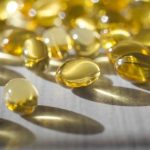
People are using “browning lotions” to tan quickly, but experts are questioning the safety of this trend driven by social media influencers. Browning lotions work with the sun’s UV rays to darken skin faster. “It is important to know that a tan is never considered to be healthy and exposure to UVA and UVB radiation can cause skin cancer, that’s the first issue I have,” said dermatologist Dr. Alexis Young of Hackensack University Medical Center in New Jersey. “A tan is a warning flag or a sign of sun damage, and the second problem I see is that products like this might make it seem as though people are somewhat protected from the sun’s UV rays when they are not,” she said in a center news release. The best and only way to protect exposed skin from sun is to use broad spectrum sunscreen with an SPF of 30 or higher, even on cloudy days, experts agree. “Apply a broad spectrum sunscreen containing either titanium dioxide and/or zinc oxide, which provides protection from both UVA and UVB rays, liberally to all uncovered skin, especially your nose, ears, neck, hands, feet and even your lips,” Young advised. Reapply sunscreen every two hours and after going in the water, she urged. In addition, wear photoprotective clothing, wide-brimmed hats and sunglasses to further protect yourself from the sun.… read on > read on >
























-300x200.jpg)













